|
NOVEMBER 2006
The berries are still on the trees and the leaves are red too!
By Sandy Leven
Never have we has such a display of berries on Rowans, Cotoneasters, Pyracantha and Holly. Other genera have performed just as admirably. I have taken innumerable pictures of berried plants round Stirling and Dunblane . Other peoples crab apples always do better than mine. This year, after removing a large juniper which always seemed to starve my nearby crab apple, the latter had more wee apples than ever before. Still I would not pick them for apple jelly and still the tree in Roman Way in Dunblane outshone it.
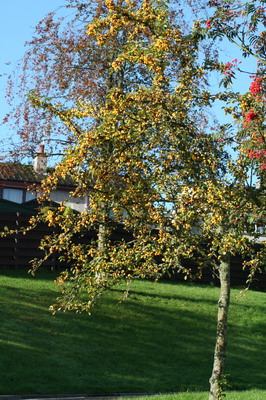 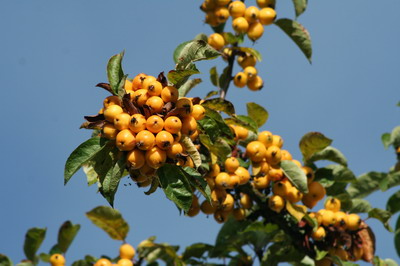
Malus 'Golden Hornet'
The Japanese maples are famed for their autumn colour. I made a mistake with mine by not giving it enough space but my neighbour employed a garden designer who bought some good plants for her and who has planted them in good combinations. The purple Berberis atropurpurea and the blue Atlantic cedar behind, along with the greens of the other plants combine well with bright fire colours of the maple [Acer palmatum dissectum atropurpureum]. Before the fire is lit in the maple it is very similar in colour to the Berberis.
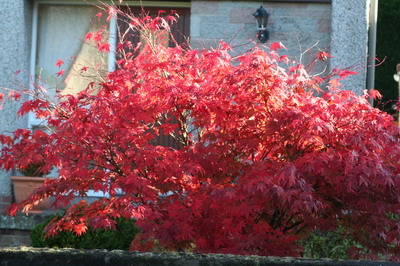 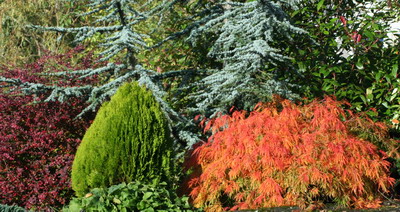
Acer palmatum
Another genus which has only recently grabbed my interest is Leucothoe. It is a member of the Ericaceae. I bought a plant of Leucothe 'Curly Red', a compact selection as an architectural plant for a trough for the 2005 Gardening Scotland. It has small cream flowers like a tiny Pieris and leaves which resemble small hazel leaves with the rough reticulation Dryas leaves. There is not much red about till autumn when they turn a rich, bright fiery maroon. The colour lasts all winter and well into spring. The shape was spoiled by a snow drift falling from the conservatory roof onto the trough!
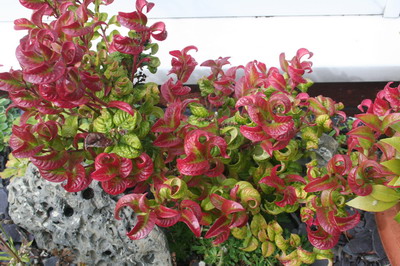
Leucothoe 'Curly Red' in summer
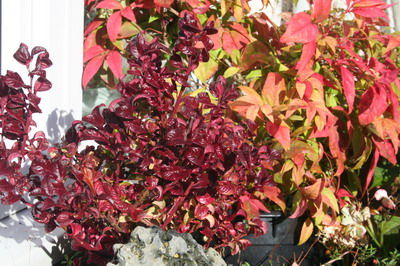
Leucothoe 'Curly Red' in autumn
The tallest of my 3 Leucothoes came from the 2005 RHS Autumn show and travelled up as hand luggage with RyanAir. I got some funny looks from the other passengers! I suppose it would be confiscated if I tried to bring it as hand luggage now! It may be Leucothoe fontanesiana. I would appreciate the correct name if I am wrong
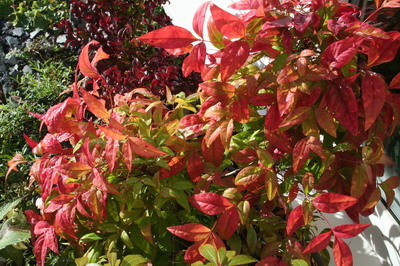
Leucothe fontanesiana?
Leucothoe scarletta was bought at the Dundee Flower and Food Festival in September. It has long thin shiny maroon foliage and I was told it will remain compact. At present it is 15cm high.
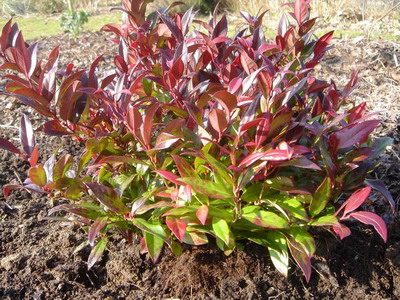
Leucothoe scarletta
I intend to look out for more Leucothoes! Isn't it quite amazing just how many wonderful genera there are in the Ericaceae family! One Leucothoe axilliaris goes by the common name of Coastal Doghobble in its North Carolina home state!
Back to Rowans. I know these trees are a bit big for rock gardens but they are wonderful trees for any small garden. Many Scottish and Irish gardens have rowans near the gate of door to keep witches away. Many people believe it is unlucky to cut down a rowan. For myself I take the position that it might not be sensible to chance fate. Why provoke things? We had a Sorbus cashmiriana die slowly from fireblight and I refused to chop it down till it was well dead. Luckily it has left some seedlings in the garden but not before the fire blight found my Sorbus 'Joseph Rock' and saw it off as well.
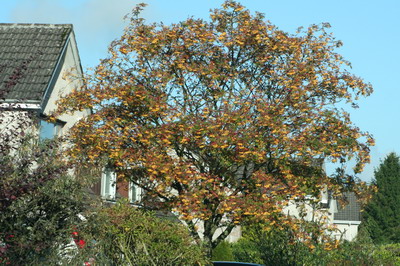
Sorbus 'Joseph Rock' [or seedling]
I think of wild rowans as having orange / red berries. They usually grow singly on hillsides and moorland, often among heather. They are instantly recognisable with their symmetrical tops, often looking as if they had been pruned. This autumn they are better berried than ever and with the sunshine and blue sky they are wonderful.
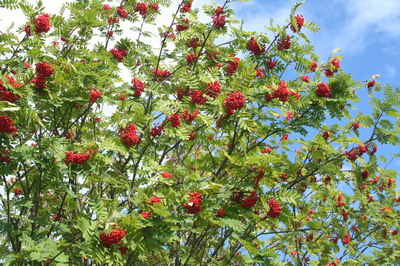
'Wild' Rowan, Sorbus aucuparia
In gardens and public spaces in Dunblane several different rowans have been planted. Some are truly magnificent. Along the route of the old A9 trunk road in Dunblane there is a row of rowans which never fail to distract me as I slow down for the traffic lights. Why are traffic lights always red when you approach them?
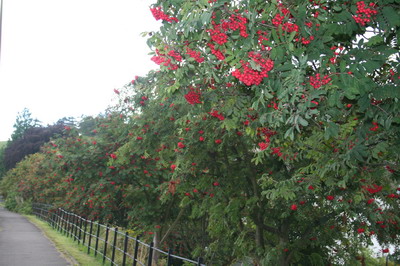
Dunblane rowans
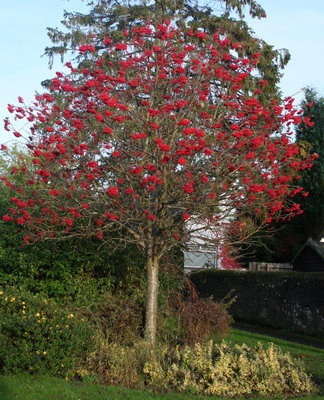
Sorbus aucuparia form
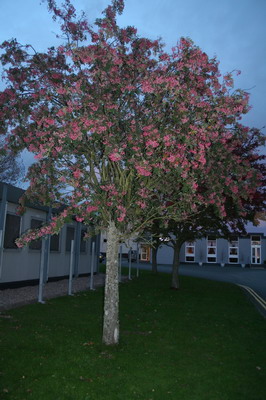
Sorbus hupehensis Photographed at Perth / Scone Airport after the SRGC AGM
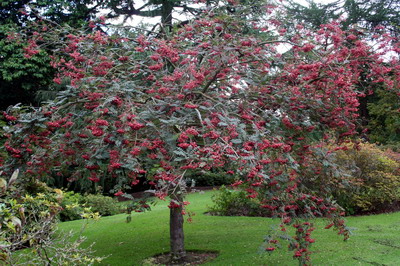
Sorbus 'Pink Pearl' Photographed at RBG Edinburgh
The next two rowans don't have traditional rowan leaves. They are not dissected into leaflets
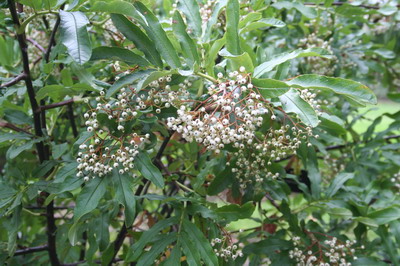
Sorbus harrowiana
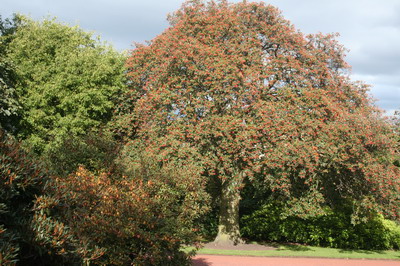
Sorbus intermedia
The only rowans small enough for a rock garden are Sorbus reducta and Sorbus poteriifolia
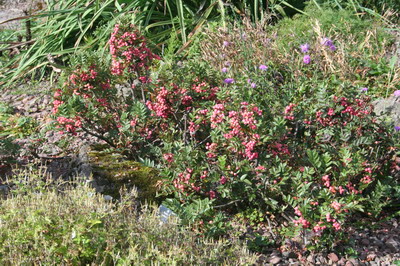
Sorbus reducta
Rose Hips and Hawthorns are traditional plants in hedges in Scotland. Perhaps they are planted to make the hedges prickly and so more effective. It would be nice to think that they had been planted for their beauty. By the banks of the River Teith, just above its confluence with the river Forth at Stirling, there are fine stands of hawthorn.
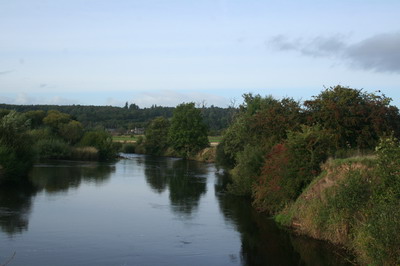 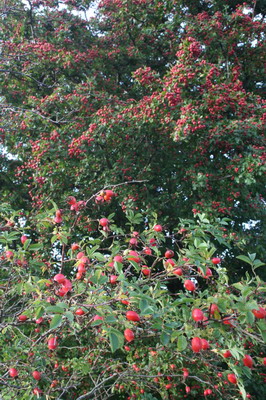
River Teith at the 'Blue Banks' where the hips and haws grow well.
As well as giving a super show of flowers in spring Berberis also contribute to autumn. They can have blue, purple or red berries, usually clustered like little bunches of grapes. Like grapes they are slightly translucent and look wonderful with sunlight shining through them.
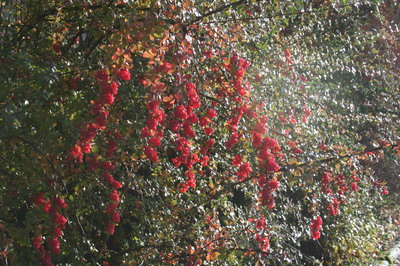 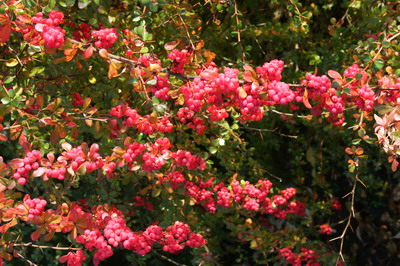
Berberis berries
Cotoneasters are not very demanding and some are giving great shows at present. Its amazing just what some people will do to their plants. I just love this bead ball!
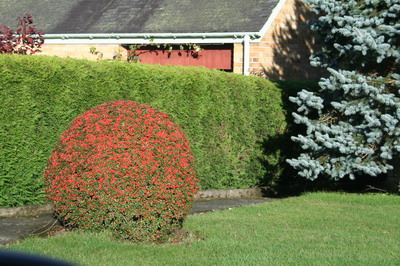
IA very well manicured bead ball of a Cotoneaster.
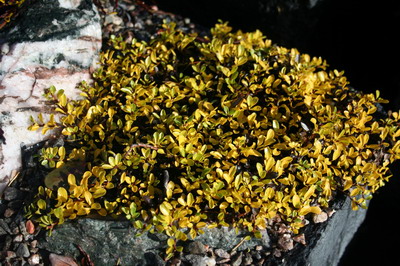
Salix in its autumn glory, only 1cm high
Sometimes even I have to admit that weeds can be beautiful. These willowherbs and thistles are shedding their seeds everywhere. If they landed in my garden I would be going daft but out in the country sunshine my mood is much more mellow!
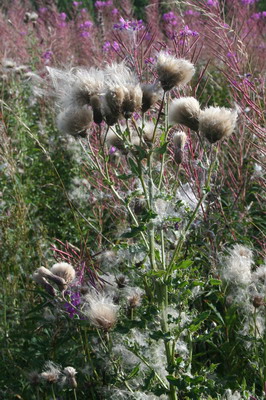
Thistles and willowherb in seed! What a mixture of pestilence!
Since there haven't been many flowers in this piece, how about these fantastic red hot pokers in the RBGE? Knifofia 'Lord Roberts' and 'Royal Standard'
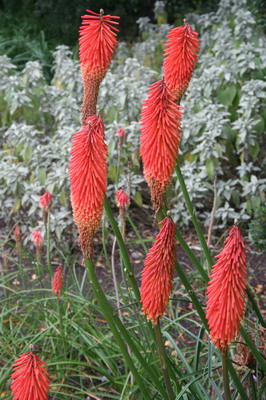
Red Knifofia 'Lord Roberts' and the yellow Knifofia 'Royal Standard'
Dunblane cathedral dominates the town from certain aspects while in other parts it is the Hydro which is the dominant building.
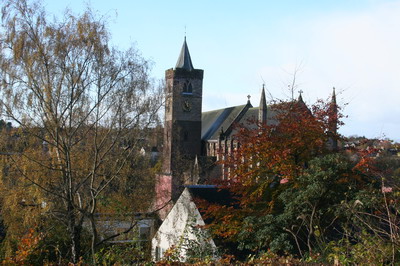 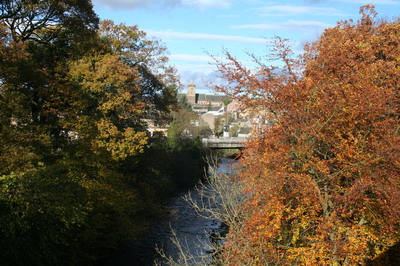
I admire hydrangeas in other folks gardens. I grow only Hydrangea 'Pia', which I sought out over 20 years ago after hearing the late Royton Heath extol its virtues. He said it was the only one small enough for a rock garden. Recently nurseries have been importing some very nice new species and varieties from Japan so I will probably plant some of these. The flowers are blue in acid conditions and pink in alkaline. As they age the blue flowers can take on several hues. These contrast with the autumn coloued trees and shrubs.
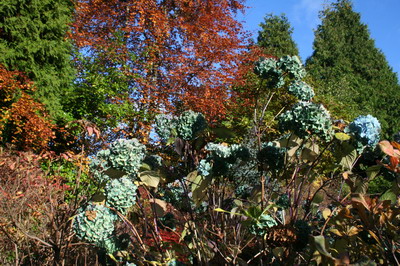 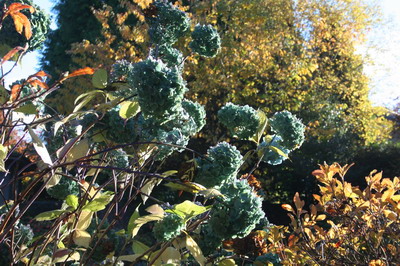
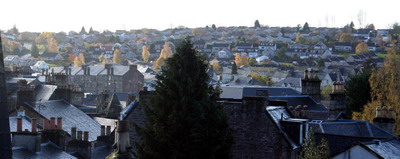
This view over the rooftops shows how many birch trees grow in Dunblane gardens
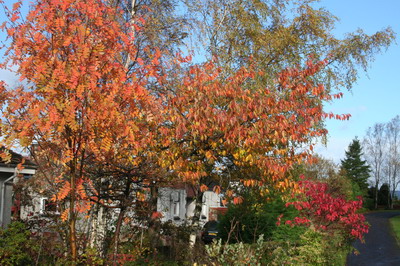
Sorbus cashmiriana, a japanese cherry and a Liquidamber provide the heat in this fiery glimpse of our front garden
^ back to the top ^
|

